The Journey Beyond Medication: Unlocking Natural Pain Relief
Chronic pain affects millions worldwide, and while pharmaceuticals often provide relief, many seek safer, natural alternatives that offer sustainable benefits without side effects. This article explores a diverse range of holistic and integrative approaches—from diet and exercise to traditional therapies and herbal remedies—designed to empower individuals to manage pain naturally and effectively.
Healing Power of Nutrition: Fighting Inflammation Through Diet
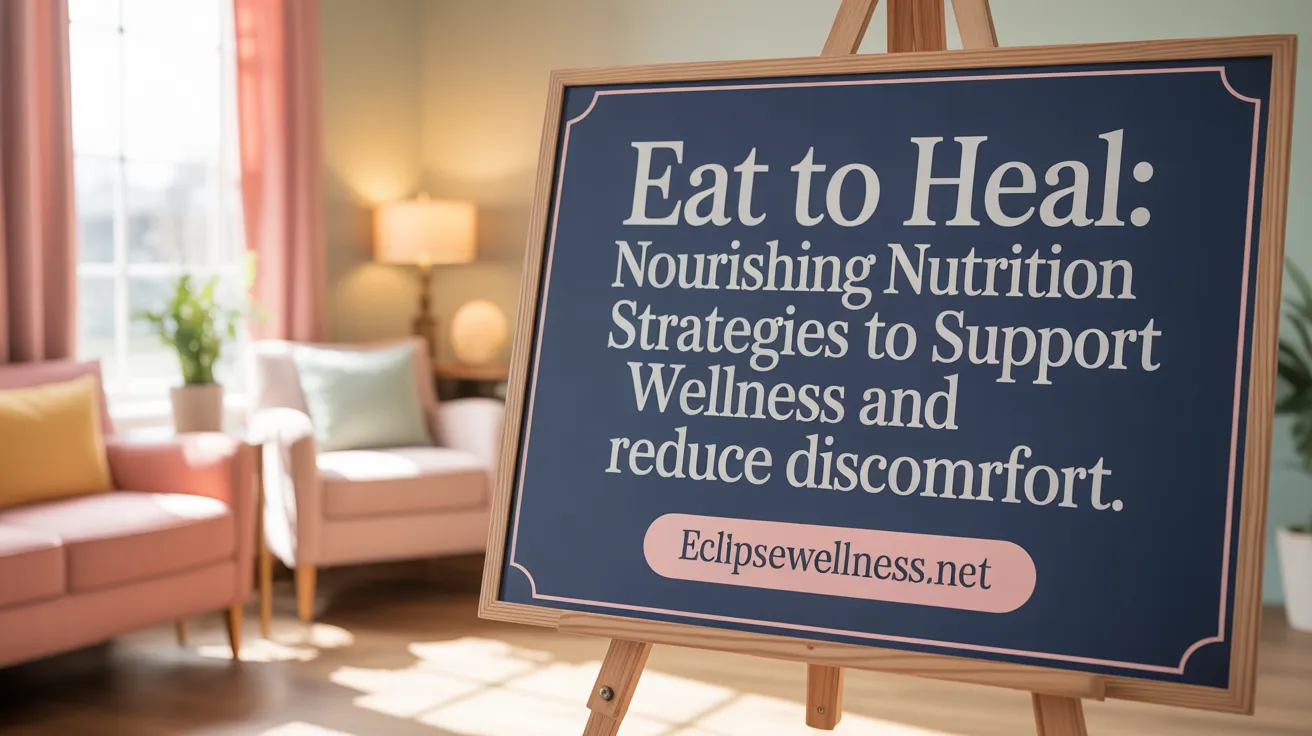
What is the role of anti-inflammatory foods in pain reduction?
A diet rich in anti-inflammatory foods can be highly effective in managing chronic pain and alleviating joint and muscle discomfort. Consuming a variety of fruits, vegetables, and whole grains provides essential nutrients that combat inflammation by reducing the production of inflammatory substances in the body. These foods help stabilize immune responses and support overall tissue health.
How do antioxidants in fruits and vegetables help ease pain?
Fruits such as berries, cherries, and oranges, along with leafy greens and fresh vegetables, contain antioxidants like vitamin C, flavonoids, and carotenoids. These compounds combat oxidative stress, which is a contributor to inflammation and pain. By neutralizing free radicals, antioxidants reduce swelling and stiffness, helping to ease discomfort associated with conditions like arthritis.
What are the safety and benefits of dietary approaches for long-term pain management?
Incorporating anti-inflammatory foods into daily diet is a safe approach with minimal side effects. Unlike pharmacological treatments, dietary changes sustain long-term health benefits by improving immune function and reducing the risk of chronic diseases. Always consult healthcare professionals before making significant dietary adjustments, especially if on medication or managing underlying health issues.
| Food Type | Key Nutrients/Compounds | Benefits |
|---|---|---|
| Leafy Vegetables | Antioxidants, Vitamins A, C, and K | Reduce swelling and improve joint health |
| Fruits | Vitamin C, Flavonoids, Anthocyanins | Fight oxidative stress, alleviate inflammation |
| Whole Grains | Fiber, B vitamins, Magnesium | Support healthy immune response and reduce inflammation |
Focusing on an anti-inflammatory diet not only helps reduce pain but also promotes overall well-being, making it a sustainable choice for managing long-term health conditions.
Movement and Therapy: Gentle Exercises and Physical Interventions
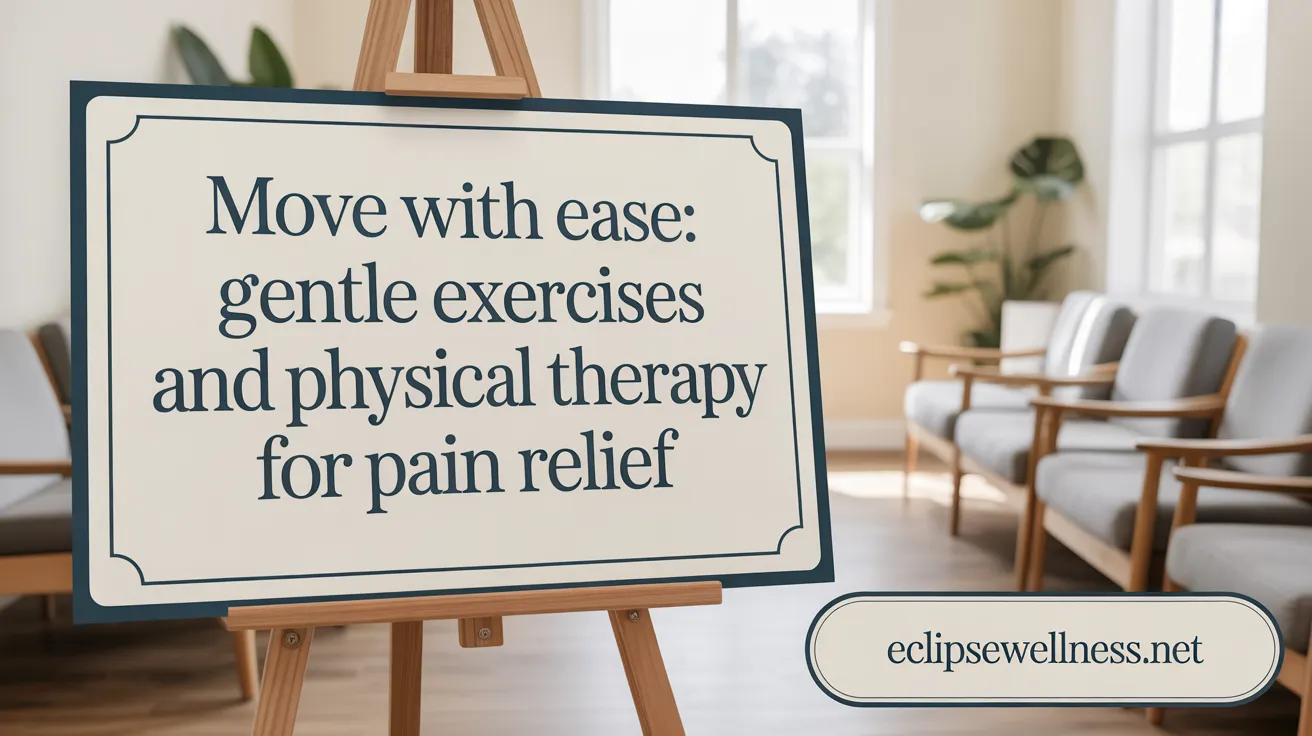
Benefits of low-impact exercises like yoga, tai chi, and swimming
Gentle activities such as yoga, tai chi, and swimming are highly effective in managing pain, especially for those with chronic conditions. These exercises focus on smooth, controlled movements and breathing, helping to reduce joint stress while enhancing flexibility and strength.
Yoga involves poses that stretch muscles and improve balance, scaffolding physical and mental well-being. Tai Chi emphasizes slow, flowing movements that promote relaxation and improve joint function. Swimming provides a weightless environment that minimizes pressure on bones and joints, making it ideal for arthritis and joint pain sufferers.
Physical therapy techniques including stretching and strength exercises
Physical therapy programs often incorporate stretching, strength training, and nerve stimulation to alleviate pain and restore movement. Stretching improves muscle flexibility, helping prevent injury and easing tightness. Strengthening exercises build supportive muscles around affected joints, decreasing strain and reducing pain.
Therapists may also use hands-on therapy, such as massage or joint mobilization, to enhance tissue function and reduce discomfort.
Impact of movement on joint flexibility and muscle strength for pain
Regular, gentle movement enhances joint flexibility and preserves range of motion, which is crucial for pain relief and the prevention of further injuries. Building muscle strength around joints provides stability, reduces strain, and alleviates pain caused by instability or misalignment.
Activities like walking or light resistance exercises stimulate blood flow, supporting tissue repair and easing stiffness, thus improving overall function.
How physical therapy identifies pain causes and provides tailored exercises
Physical therapists conduct thorough assessments to pinpoint the underlying cause of pain, which might include misalignment, weakness, or joint damage. Based on this evaluation, they develop customized exercise plans that target specific issues.
These tailored programs ensure safe progression, focus on rehabilitation, and help patients regain movement, reduce pain, and improve quality of life. The combination of precise diagnostics and individualized therapy plays a vital role in long-term pain management.
Ancient and Modern Bodywork: Acupuncture, Massage, and Chiropractic Care
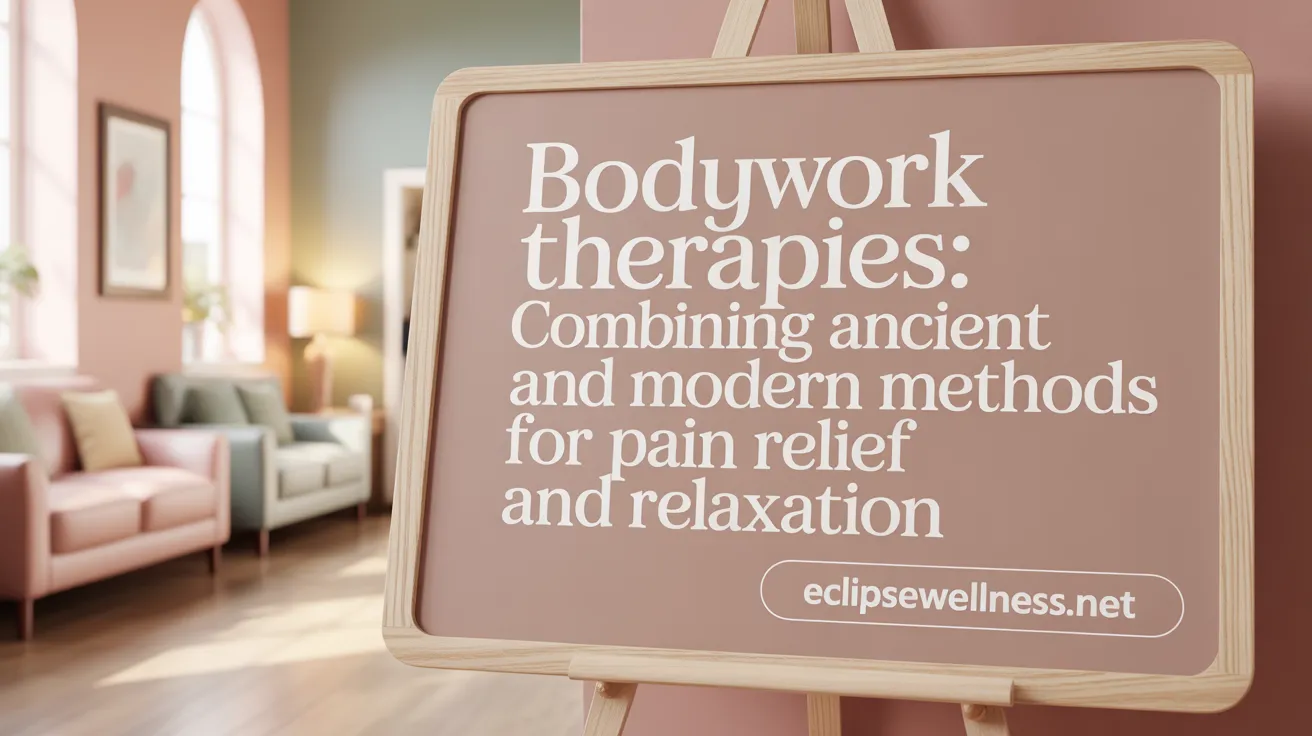
What is the role of acupuncture in reducing pain?
Acupuncture, an ancient Chinese technique, involves inserting thin needles into specific points on the body to stimulate nerve and muscle activity. This stimulation can help balance the body’s energy pathways, known as qi, and has been shown to alleviate various types of pain, including shoulder, neck, migraines, and arthritis. Modern research suggests that acupuncture may promote the release of neurotransmitters like serotonin, which can further help reduce pain and stress, making it an effective option for managing chronic pain conditions.
How does massage therapy help ease muscle and joint pain?
Massage therapy provides multiple benefits for those experiencing pain. It works by relaxing muscles, tendons, and joints, which reduces tension and alleviates discomfort. In addition to relieving physical pain, massage also boosts mood by encouraging the release of feel-good hormones such as endorphins. This therapeutic approach is effective in calming the nervous system, reducing inflammation, and offering immediate relief from back, neck, shoulder, and knee pain. Over time, regular massages can improve overall physical and emotional well-being.
In what ways can chiropractic care aid in pain relief?
Chiropractic care focuses on spinal adjustments and other manual therapies to restore proper alignment of the spine and neck. Misalignments, or subluxations, can contribute to various pain syndromes, including back and neck pain and headaches. By realigning the spine, chiropractic practitioners can help reduce nerve pressure, improve posture, and promote natural healing processes. Many patients find chiropractic care effective in reducing pain and restoring mobility, especially for issues related to the musculoskeletal system.
How are these therapies integrated into pain management strategies?
Combining acupuncture, massage, and chiropractic care offers a comprehensive approach to pain management. These therapies are often used alongside other treatments, such as physical therapy and mindfulness techniques, to enhance overall effectiveness. They address different aspects of pain—whether nerve stimulation, muscle relaxation, or structural correction—and can be tailored to individual needs. Their natural, non-invasive nature makes them appealing options to reduce reliance on medication, improve quality of life, and manage long-term pain more effectively.
Harnessing Mindfulness and Relaxation Techniques for Pain Control
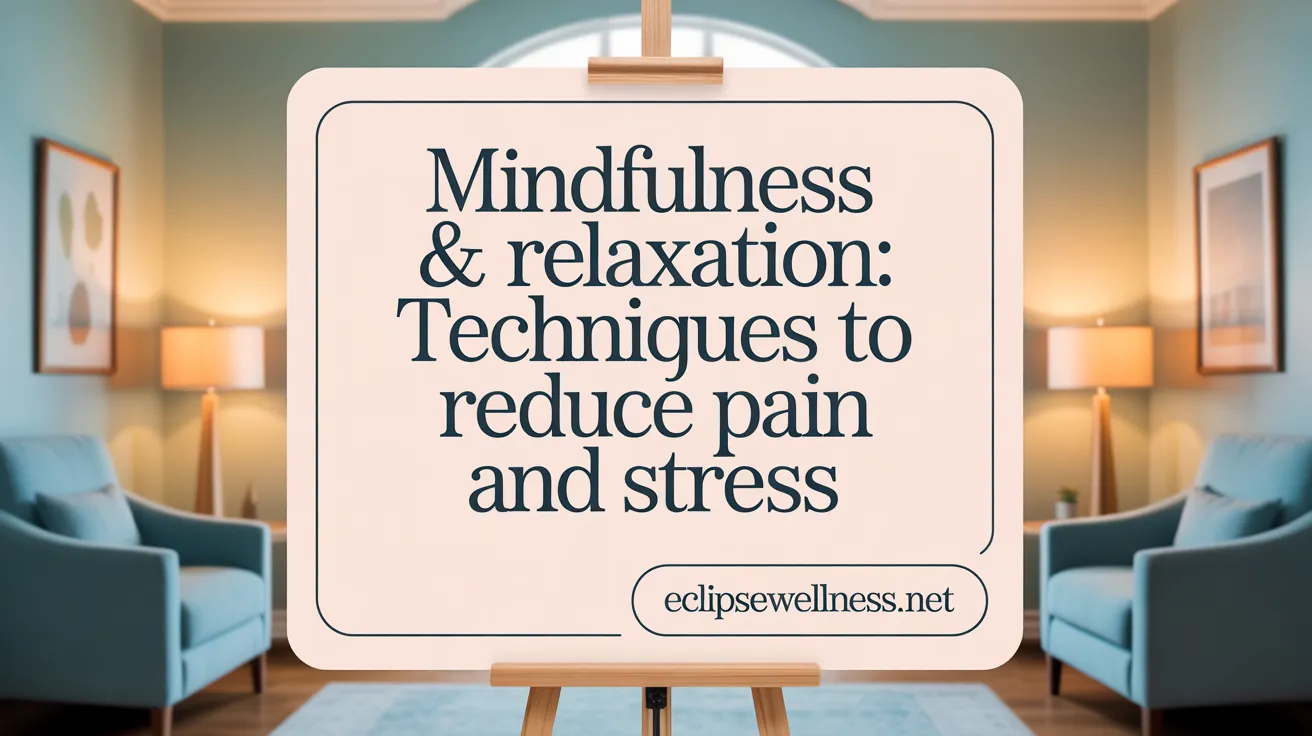
How can mindfulness meditation and breathing exercises help reduce pain intensity?
Mindfulness meditation, especially practices like diaphragmatic breathing, encourages focusing on the present moment and deepening relaxation. These techniques help lower muscle tension, reduce anxiety, and decrease pain perception. Slow, deep breathing triggers a relaxation response, which can lessen chronic pain by calming the nervous system.
What benefits do guided imagery, hypnosis, and progressive muscle relaxation offer?
Guided imagery involves visualizing peaceful scenes or positive outcomes, helping distract from pain and promote mental calmness. Hypnosis can alter pain perception and enhance pain management by bypassing conscious control and inducing relaxation. Progressive muscle relaxation systematically tenses and relaxes muscle groups, reducing overall muscle tension and pain. All these methods promote mental and physical relaxation, helping to ease pain.
How do psychological therapies and emotional support influence pain management?
Talking therapies, such as cognitive-behavioral therapy (CBT) or support from psychologists and hypnotherapists, assist in managing emotional responses to pain. Addressing emotional distress can lower the brain’s focus on pain signals, thereby reducing perceived pain intensity. Emotional support offers validation and coping strategies, improving overall well-being.
In what ways does stress reduction impact pain pathways?
Stress activates pain pathways by releasing stress hormones like cortisol, which can heighten pain sensitivity. Techniques such as mindfulness, relaxation, and stress management exercises help calm the nervous system, interrupting this cycle. Reduced stress levels lead to less inflammation and pain, making these approaches valuable for long-term pain control.
Integrating mindfulness and relaxation techniques into daily routines can significantly improve pain management outcomes. They not only lessen pain severity but also enhance emotional resilience, making these strategies an essential part of holistic pain care.
Natural Remedies and Essential Oils: Herbal Allies Against Pain

Efficacy of turmeric, boswellia, ginger, and feverfew in reducing inflammation and pain
Herbal supplements have been used for centuries to ease pain and reduce inflammation. Turmeric, containing curcumin, is especially well-studied for its anti-inflammatory properties and has shown similar effectiveness to NSAIDs in reducing joint pain, such as in osteoarthritis. Boswellia, or frankincense, has also been shown to decrease pain and stiffness in osteoarthritis patients. Ginger is another powerful herb, with compounds like gingerols that help lower inflammation and control postoperative and muscle pain. Feverfew, traditionally known for migraine prevention, has demonstrated anti-inflammatory and neuroprotective effects, making it useful for certain types of chronic pain. These herbs work by targeting inflammatory pathways in the body, offering a natural alternative to synthetic medications for long-term pain management.
Pain-relieving properties of essential oils like lavender, rosemary, peppermint, and clove
Essential oils can provide quick and natural relief from different types of pain. Lavender oil is known for relaxing nerves and easing neuropathic and stress-related pain. Rosemary oil has anti-inflammatory effects and can improve blood circulation, helping with headaches and muscle pain. Peppermint oil, particularly due to menthol, offers an immediate cooling sensation that relaxes muscles and alleviates tension headaches. Clove oil contains eugenol, a natural anesthetic that is effective for localized pain, such as toothaches. Inhaling or applying these oils topically can effectively relieve mild to moderate pain, making them a popular choice for holistic pain management.
Topical vs. oral applications and safety considerations
Herbal remedies and essential oils can be applied either directly on the skin or taken orally, depending on the specific herb or oil. Topical application is often preferred for localized pain, such as joint or muscle pain, while oral supplements are used for more systemic issues. However, safety is paramount. Essential oils should be diluted properly before skin contact to prevent irritation. Some herbs, like feverfew and turmeric, may interact with medications or cause side effects in certain individuals. Pregnant women and those with underlying health conditions should consult healthcare professionals before starting herbal treatments. Using herbs and oils as complementary therapies alongside conventional medicine can enhance pain relief while minimizing potential risks.
Practical Self-Help Strategies and Lifestyle Adjustments for Lasting Relief
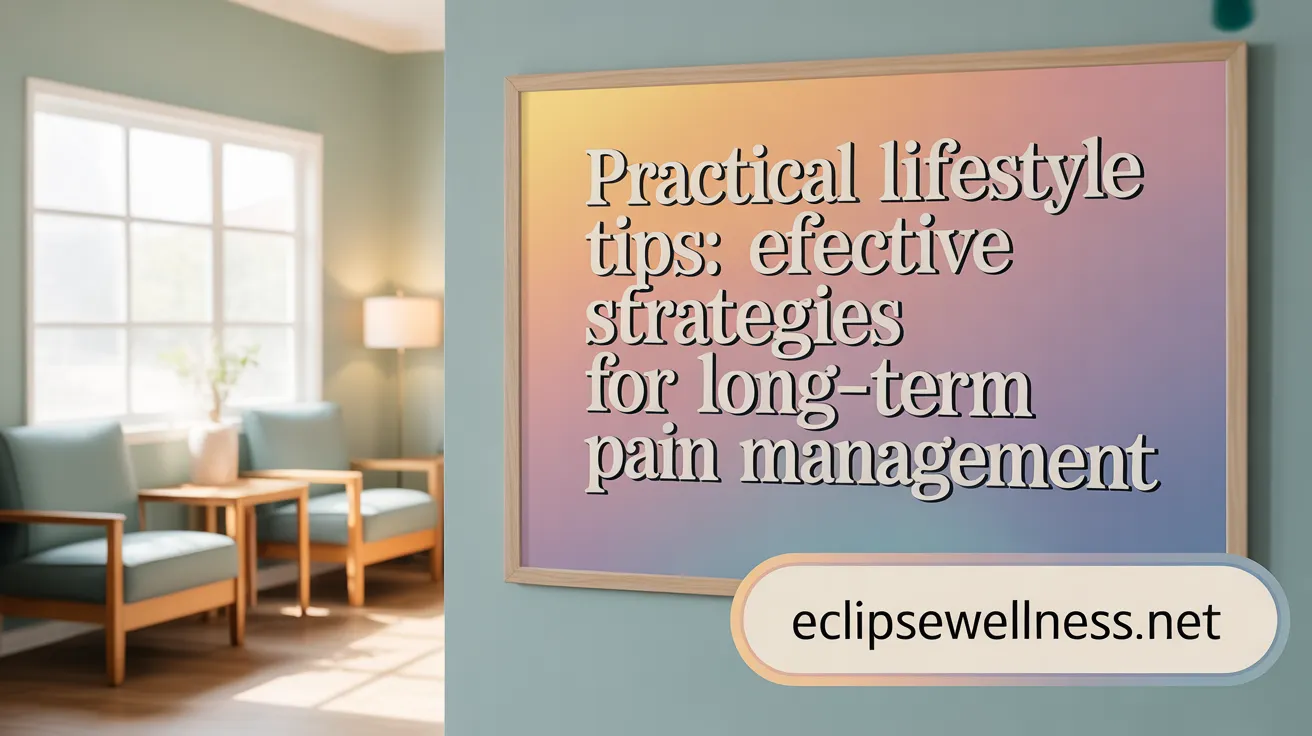
Using heat and cold therapy to manage swelling and stiffness
Applying heat and ice packs is a simple yet effective way to reduce pain and inflammation at home. Ice treatments help decrease swelling and numb pain, making them especially useful for acute injuries or flare-ups. Moist heat, such as warm compresses or hot packs, can relax tight muscles and improve joint flexibility, particularly beneficial for conditions like arthritis.
Importance of regular sleep and managing sleep quality in pain control
Maintaining a consistent sleep routine significantly impacts pain levels. Good sleep helps the body repair and recover, reducing the perception of pain. If sleep issues persist, consulting a healthcare professional is advised, as poor sleep can exacerbate chronic pain conditions.
Engaging in hobbies and social connections for emotional support
Participating in enjoyable hobbies like photography, sewing, or gardening can divert attention away from pain and boost mood. Staying connected with friends and family provides emotional support, helps manage stress, and fosters a sense of community, all of which are beneficial for pain management.
Educational and self-management resources to empower pain sufferers
Learning about pain management through materials like the Pain Toolkit or NHS leaflets equips individuals with practical knowledge to handle long-term conditions. Participating in self-management courses offered by health services can teach skills that reduce reliance on medications and improve quality of life.
Benefits of relaxation practices and consistent routine
Practicing relaxation techniques such as diaphragmatic breathing, meditation, or progressive muscle relaxation can lower muscle tension and decrease pain intensity. Establishing a daily routine that incorporates these practices and gentle activities like walking or swimming supports overall well-being.
| Technique | Description | Additional Benefit |
|---|---|---|
| Heat and Cold Therapy | Reduces inflammation, eases stiffness | Easy to do at home |
| Relaxation Practices | Breathing, meditation, guided imagery | Low-cost, stress-reducing |
| Engaging Hobbies | Creative activities that distract from pain | Enhances mood and emotional well-being |
| Social Connections | Quality time with loved ones | Emotional support and motivation |
| Self-Management Resources | Educational materials and courses | Empowerment and reduced medication use |
Implementing these lifestyle adjustments can foster a more manageable and less painful experience, often complementing medical treatments for chronic pain.
Towards a Balanced and Empowered Approach to Pain
Natural approaches to pain relief offer multi-dimensional benefits by addressing physical, emotional, and lifestyle factors that contribute to chronic discomfort. Combining anti-inflammatory nutrition, gentle exercise, traditional therapies like acupuncture and massage, mindfulness, herbal supplements, and self-care routines creates a comprehensive and safe framework for long-term pain management. With guidance from healthcare professionals, individuals can embrace these effective, non-invasive strategies to reduce reliance on medications and regain control over their quality of life.
References
- 8 natural ways to ease chronic pain
- Natural Pain Relief: Boswellia, Turmeric, and More
- 5 alternative treatments for chronic pain
- 10 ways to reduce pain
- Top 12 herbs and other remedies for natural pain relief
- Natural Herbal Non-Opioid Topical Pain Relievers ...
- Holistic approaches to chronic pain
- 4 Ways To Manage Chronic Pain Without Medication
- 8 non-invasive pain relief techniques that really work
